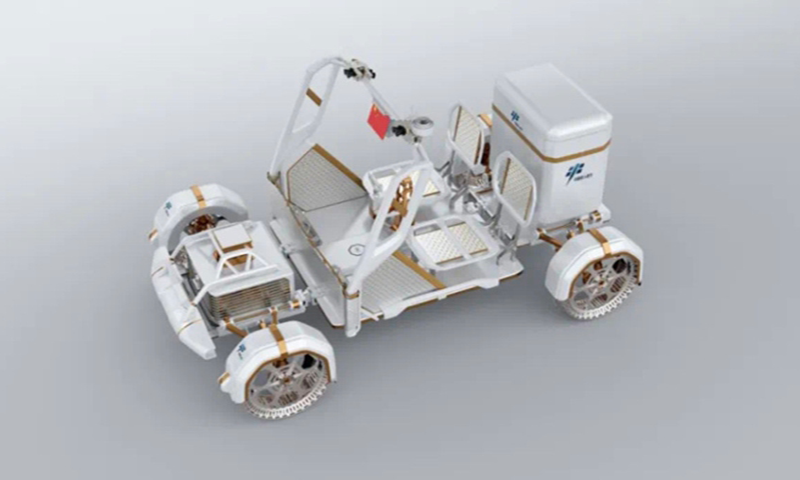
Graphic representation of the crewed lunar rover Photo: The Paper
In order to achieve the goal of landing on the moon by 2030, the crewed lunar rover has entered the initial prototype research and development (R&D) stage, with two teams under the state-owned space giant, China Aerospace Science and Technology Corporation (CASC), winning the R&D contracts.
The two winners are the Shanghai Academy of Spaceflight Technology (SAST) and China Academy of Space Technology, both subsidiaries under CASC, The Paper reported on Tuesday citing company sources.
The solicitation for the crewed lunar rover proposals went through two rounds of selection, and the two finalists that received the contracts each have their own unique characteristics in terms of innovation and advancement, the SAST revealed. Subsequently, a comparison will be conducted at the end of the prototype development phase to determine a final development team for China's first crewed lunar landing.
Additionally, a naming campaign for the crewed lunar rover will be launched in 2025, The Paper report said.
Other relevant works for the manned lunar landing are progressing smoothly. Currently, the Long March-10 carrier rocket, the Mengzhou manned spacecraft, the Lanyue lunar lander and the lunar landing spacesuit are all in the initial sample production and related ground testing phases as planned.
Major tests have been completed, including the comprehensive airdrop of the spacecraft, the separation of modules of the lander, the testing of the three-engine power system the rocket and the high-altitude simulation test of the hydrogen-oxygen engine. A batch of ground facilities and equipment to support these production tests has also been built and put into use, the Xinhua News Agency reported.
The pre-mission flight tests and the overall plan for the scientific research objectives and supporting payloads for the mission have been essentially determined, and the systems for the launch site, monitoring and communication, and landing site are being developed and constructed in an orderly manner according to the plan.
Previously, at a press conference before the launch of Shenzhou-19 on October 29, China Manned Space Agency announced the 2030 target for this grand lunar landing mission.
The agency also revealed that the fourth batch of taikonauts will undertake the manned lunar landing missions. In May this year, the selection process for the fourth batch was completed, with a total of 10 reserve taikonauts being selected, including eight pilots and two payload specialists. They joined the training program in August.
Given that they will not only perform space station missions but also future manned lunar landing tasks, the training curriculum has been designed to focus on essential skills such as living and working in a weightless environment and maintaining health, as well as specialized skills like carrying out extravehicular activities, equipment maintenance and space science experiments.
Furthermore, the training aims to enhance taikonauts' capabilities for future manned lunar missions, including operating spacecraft, driving lunar rovers, identifying celestial bodies, conducting geological surveys and transitioning from weightlessness in space to walking under load on the lunar surface, the agency said.
Global Times
